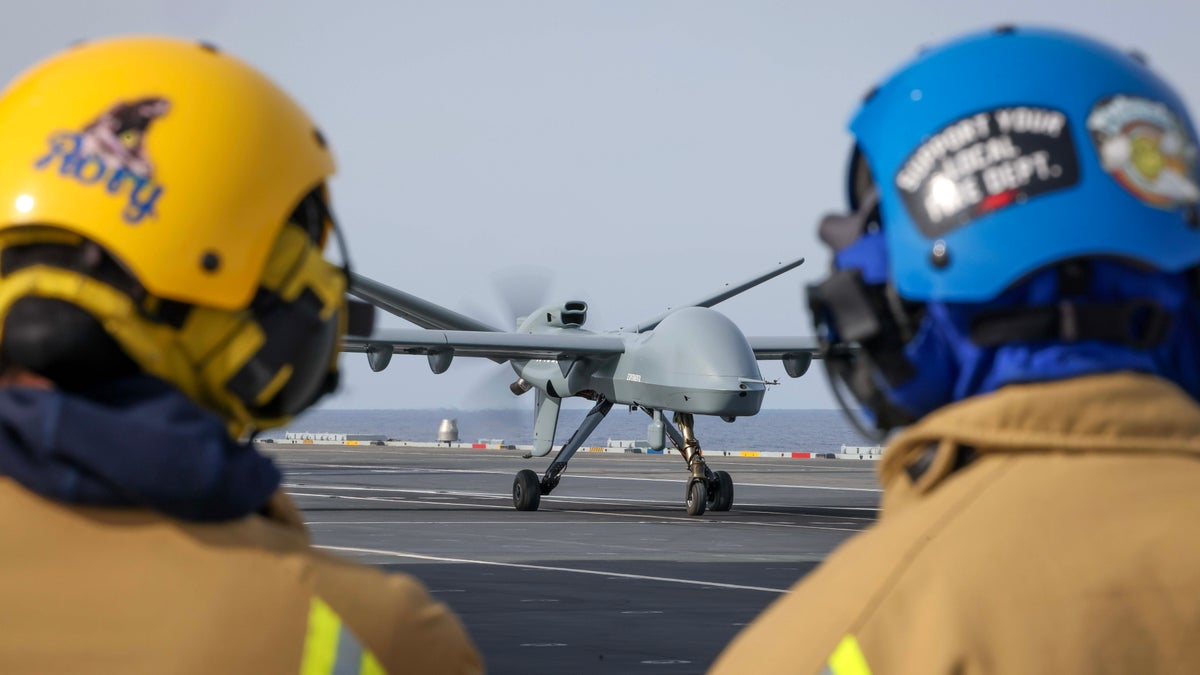
A British military drone has taken off and landed on an aircraft carrier for the first time, in what the Royal Navy says paves the way for the “next generation” of UK air power.
The aircraft, which has a 55ft (17m) wingspan, launched from HMS Prince of Wales in a trial off the coat of Virginia, US on 17 November.
The remotely operated drone, weighing more than 1.5t tonnes and 30ft (9m) in length, codenamed Mojave, was the first of its size to fly from an aircraft outside the US.
“The success of this trial heralds a new dawn in how we conduct maritime aviation and is another exciting step in the evolution of the Royal Navy’s carrier strike group into a mixed crewed and uncrewed fighting force,” Rear Admiral James Parkin, Royal Navy Director Develop, whose team planned the trial.
The Royal Navy’s Second Sea Lord, Vice Admiral Martin Connell, said embracing autonomy was “the next logical step to ensuring that the Royal Navy can continue to fight and win in an increasingly-complex operating environment”.
He added: “With so many international partners interested in the results of these Mojave trials on board HMS Prince of Wales, I am delighted that we are taking the lead in such exciting and important work to unlock the longer-term potential of the aircraft carrier and push it deep into the 21st Century as a highly-potent striking capability.”
Pilotless aircraft have been flying from Royal Navy vessels for around two decades but the Mojave – a version of the MQ1C Gray Eagle aircraft – is much larger and more complex than other models.
The drone is capable of carrying out several long-endurance missions from medium altitudes.
The drone took off from and landed back on HMS Prince of Wales in a trial off the coat of Virginia, US on Friday— (MoD/Royal Navy)
It is from the same family of aircraft as the Royal Air Force’s new Protector RG Mk1 aircraft, such ‘medium altitude long endurance’ remotely piloted aircraft are capable of conducting long-range surveillance and strike missions over many thousands of square miles.
Months of planning by experts from the Royal Navy, General Atomics and HMS Prince of Wales’ crew went into the trial – one of several involving crewless aircraft and F-35s this autumn to push the boundaries of operations involving the UK’s two carriers.
“My team and I are excited and proud to be the first to launch and land a Mojave from an aircraft carrier,” said Commander Martin Russell, in charge of air operations aboard HMS Prince of Wales.
“During a deployment centred around experimentation and expanding the envelope of the Queen Elizabeth class, this is one of the highlights.
“Integrating the Navy Develop and General Atomics personnel into the Prince of Wales team was key to enabling such a large Remotely Piloted Air System to operate from the deck during this trial, with the capability feeling like a glimpse into the future of these ships.”
HMS Prince of Wales is now conducting intense training and trials activity with the US Marine Corps before returning home to Portsmouth next month.







